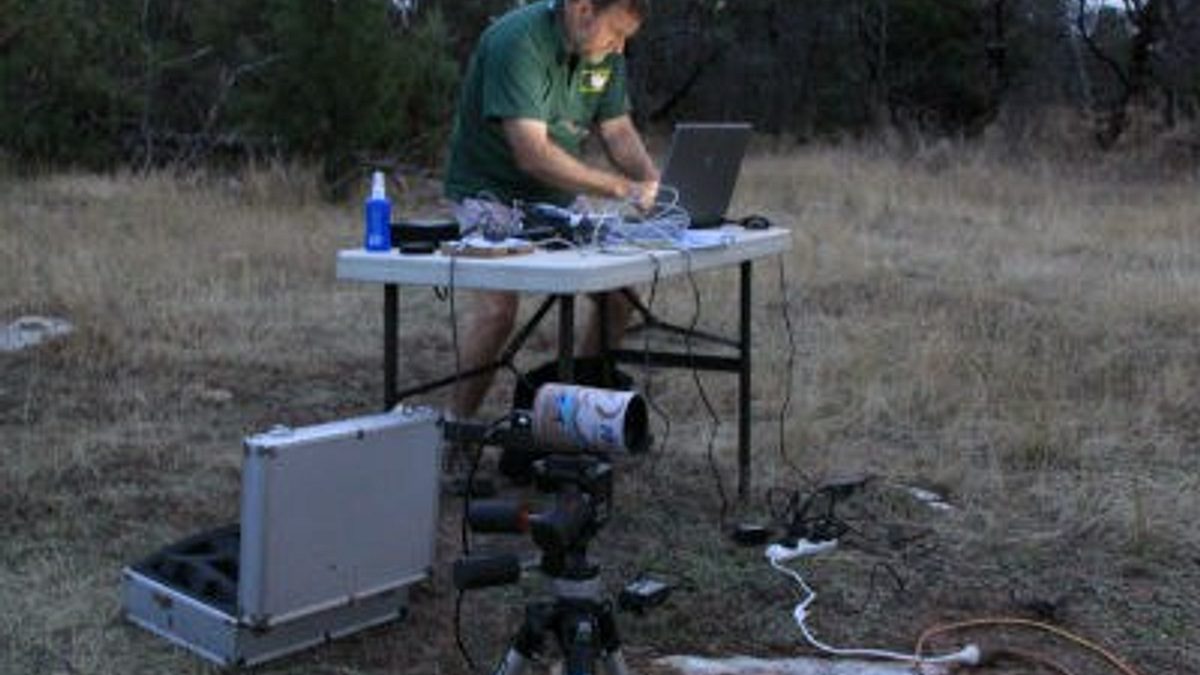Population Monitoring – Bat Cave
Population size is a key indicator of the health of a species. Since the 1960s, significant research effort has been applied to producing an accurate and efficient count of the number of bats that breed in Bat Cave with the aim of monitoring population size over time. Population monitoring is important for providing an early warning sign, alerting scientists and managers to action before serious decline occurs.
Early efforts to count the population in Bat Cave over the breeding season involved mark-recapture studies that put the population at over 100,000 animals. In 2000, numbers were found to be less than 80,000 prompting an annual population monitoring program.
Technology has played an important role in population monitoring at Bat Cave. From 2001, video cameras were used to film the nightly fly-out of the bats. After recording, the footage was played back in slow motion to enable researchers to count the individual bats as they were filmed flying out of the cave. A long and tedious process! The breeding population in Bat Cave was estimated at 35,000 to 21,000 individuals from 2001 to 2008 using this method.
In 2009 a thermal imaging camera and missile tracking software was purchased by the Department of Environment, Water and Natural Resources after successful trials of the technology. The new system has significant advantages over the old method; counts ware conducted automatically using computer software which, once calibrated, provided accurate counts that do not require days of laborious counting.
Daily population monitoring using the new techniques in 2011 revealed for the first time that not all the bats return to Bat Cave each day of the breeding season, prompting the question, where do they go?!
Friends of Naracoorte Caves continued the population monitoring project over the 2012/13, 2013/14 and 2014/15 breeding seasons. Altogether, population monitoring at Bat Cave since 2001 provides a long-term baseline for assessing changes in population size of the Southern Bent Wing Bat.
Further reading
Dwyer, P. D. and Hamilton-Smith, E. 1965. Breeding caves and maternity colonies of the bent-winged bat in south-eastern Australia. Helicite4, 3–21.
Grant, C. and Reardon, T. 2004. The use of video taping of fly-outs for the population assessment of cave-dwelling bats. Abstracts of the 11th Australasian Bat Conference, Toowoomba. Australasian Bat Society Newsletter22, 34.
Lear, K., Reardon, T. and Lumsden, L. 2012. Population fluctuations of the maternity colony of Miniopterus schreibersii bassanii at Naracoorte Caves National Park, South Australia. Abstracts of the 15th Australasian Bat Society Conference, Melbourne. Australasian Bat Society Newsletter38, 25.
Lumsden, L. and Jemison, M. 2015. National Recovery Plan for the Southern Bent-wing BatMiniopterus schreibersii bassanii. Department of Environment, Land, Water and Planning.



